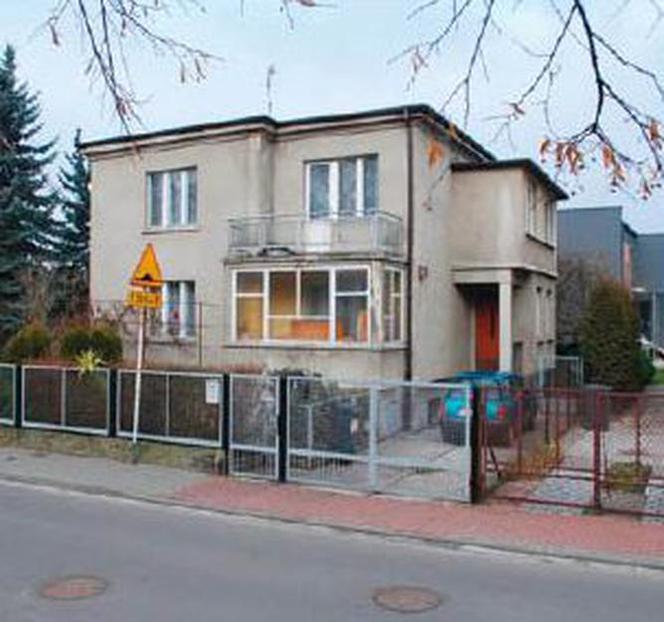Author: Piotr Mastalerz
Before the reconstruction, the Kostka house had monotonous facades with windows identical to those in the apartment block. The only variety of the building were numerous avant-corps and a winter garden, i.e. a glass balcony
For a skilled designer, a cube house from the Polish People’s Republic can be like a well-primed canvas on which a lot can be created. This typical Polish cube is the best example of this. It was changed by the architects and owners of the house. They were charmed by the one-story building because it had very nice proportions and large, well-lit rooms. See the photo gallery before and after the renovation.
Contents
Cube house – architects chose itReconstruction of a cube house from the times of the Polish People’s Republic – photo galleryWell-thought-out reconstructionLight in interiorsNatural plaster – pretend woodChange from the insideThe living room is open to the dining roomConcrete staircase
In the 1990s, cube houses were massively rebuilt into cottages with sloping roofs. Now we can observe the second wave of metamorphoses of this type of houses. Despite many disadvantages, they usually have a clear and functional layout of rooms taken directly from apartments in blocks of flats, and they were often built in prestigious villa districts, where it is now difficult to find a vacant plot. For a skilled designer, cube houses can be like a well-primed canvas on which a lot can be created.
Cube house – architects chose it
The owners of the rebuilt cube are architects by profession. They knew perfectly well how much they could squeeze out of the modernist box. The one in Katowice-Brynów has been put up for sale! It was tempting with its location. The estate is considered elegant and the most prestigious in Katowice. Even though it is only a few minutes’ drive from the city center, it is green and peaceful. Low single-family buildings border the city’s largest park, Kościuszki, to the west, and are surrounded by a large forest complex to the south.
The disadvantage of the plot was its location – the garden located deep inside the plot faces the north, and both facades facing the streets have the best south-west lighting. The architects were charmed by the one-story shape of the house – it had very nice proportions, and the large rooms were well lit.
The technical condition of the building was satisfactory, so the renovation consisted mainly of lifting and adapting the house to the requirements of new users.
Reconstruction of a cube house from the times of the Polish People’s Republic – photo gallery
Author: Piotr Mastalerz
Before the reconstruction, the Kostka house had monotonous facades with windows identical to those in the apartment block. The only variety of the building were numerous avant-corps and a winter garden, i.e. a glass balcony
Well-thought-out reconstruction
Thanks to the renovation, all the building’s advantages were brought to light and its shortcomings were skillfully eliminated. The latter were mainly related to poor finishing materials, which made the building age poorly. All floors, plasters and tiles were torn off – a bare shell of the house was left.
The old cube was dressed in new clothes. The facades came first. Previously, they were quite monotonous because they had identical, large three-leaf windows, which made the house look like a mini-apartment block. The architects kept the shape of the building unchanged and only thanks to new finishing materials and changing the arrangement of windows, the building achieved a contemporary expression.
The reconstruction was also guided by a fundamental idea – minimalism. The aim was to reduce elements and obtain the smoothest possible surfaces. Hence, the new windows are made of gray aluminum joinery, most of them are large panes of glass without any division. The designers analyzed the lighting needs and, as a result, most of the windows changed their proportions.
Light in interiors
Originally, the kitchen had one large window, after the renovation they were replaced by two horizontal ones placed directly above the countertops (under the hanging cabinets), thanks to which the light now falls exactly onto the countertops. The new window gave the kitchen an opening to the garden, which it did not have before. In turn, one of the bedrooms on the first floor has a porthole instead of a regular window, and the bathrooms on both floors now have larger, horizontal windows instead of small square windows. In this way, a system of irregular openings of various sizes was created on the facades – the character of the house is created by their interesting, abstract composition.
Natural plaster – pretend wood
The colors of the body of the house are gray – a light, close to white color covers the facades, dark graphite and a low plinth. The accents that warm up the whole are light wood inserts, or rather waterproof laminate imitating teak. It was used to decorate the corner strip between the kitchen windows and the entire shape of the former veranda. The latter has changed the most. It received solid brick walls because its space was incorporated directly into the interior of the living room. The former orangery was transformed into an avant-corps, its large glazing replaced by windows. And so the house was enriched with an impressive wooden cube.
The rebuilt structure is complemented by modern, minimalist details: tempered glass balustrades placed on the balcony above the bay window and accompanying door windows, as well as new entrance stairs in the form of smooth planes that seem to levitate because their structure has been skillfully hidden.
Extension of the Poznań cube from the 1950s. Now it is a modern, comfortable two-family house…
Change from the inside
The interior of the house has undergone the greatest change, especially the ground floor. Previously, it consisted of several separate rooms. The living room and dining room were separated by a wall and connected by a wide door. The kitchen was completely separated. There was also a dark corridor and an isolated staircase. The renovation transformed the entire floor into one open space. Most of the walls were demolished. Structurally, this was possible because the internal load-bearing wall was replaced by a beam.
The living room is open to the dining room
The living room is a space flooded with light, because large windows face south and west. Previously, the living room separated them with a dark corridor. Now you can see the garden from the living room through the large balcony window in the open hall. In the near future, it will be possible to go out through these glass doors to a large wooden terrace, which the architects intend to build in the garden. The living space has an interesting “pocket” – it is the recess of the veranda, which used to be outside the house. Now there is a small work space with a desk, and next to the large window there is space for the housewife’s flower collection.
A modern barn-type house with views to the horizon. A total blast!
Concrete staircase
This space has undergone a major transformation. Its walls appear to be made of concrete, complemented by glass balustrades and wooden steps. The effect of architectural concrete was achieved in an ingenious way – it is stucco imitating concrete slabs.
The first floor is a night space. There is a master’s bedroom, a daughter’s room, a guest bedroom, a large bathroom and a dressing room. The private character of this part of the house is announced by a soft, gray carpet that muffles footsteps. Here, too, the aim was to achieve an impression of spaciousness. This time it was achieved thanks to bright colors and plenty of daylight. Previously, the upstairs corridor was dark. After the renovation, there is no need to turn on the lamps, because the full doors to the rooms have been replaced by transparent panes of milky glass.
Author: Piotr Mastalerz
The hall on the ground floor has become more spacious. Dark paneling was replaced by light plaster, and the door to the vestibule was replaced with completely transparent glass
See also the effect of rebuilding another cube house
Author: JURIKU Architects/materials of participants of the Renovation of the Year competition
Before the reconstruction, the house was neither functional nor insulated
Was this article interesting? Share it!
2023-10-03 12:05:54
#Cube #house #renovation #architects #changed #Photos #reconstruction


